Starbucks' sweeping store closures aren't a surprise. Here's why
Published in Business News
Deanna Meyerhoff, 55, moved to Seattle in 1993. Back then, the expansion of Starbucks was just so tremendous," she said.
Until recently, Meyerhoff would treat her daughter to pink drinks and stop for iced black tea lemonades while on walks with the family dog, she recalls. But those are memories now.
Her favorite Starbucks stores in her neighborhood, Haller Lake, recently shuttered as part of a slew of closures announced by the company last week. Living in the coffee giant's hometown, "it definitely hits differently when it's a local company," Meyerhoff said.
"It's a shareholder thing: You grow or you die. And they grew — and, now, they have to shrink back to actually make money."
Meyerhoff isn’t an industry analyst, but her assessment is shared by some who see last week’s $1 billion Starbucks restructuring plan, including layoffs and store closures, as a move to please investors.
Like other large coffee chains, Starbucks is trying to stand out among the competition and welcome more customers through its doors all while fighting global and local headwinds — from production costs to President Donald Trump's tariffs.
It has not been easy. In July, Starbucks reported mixed quarterly results, including increased revenue and decreased profit. At $558 million, the company’s profit was almost half of what it reported for the same quarter a year earlier, and earnings per share were 49 cents — a drop from 93 cents for the same period in 2024.
At the time, CEO Brian Niccol, less than a year on the job, talked about his experience with turnarounds, adding, “We're building back a better Starbucks experience and a better business.”
The recent changes could be a step toward buoying the business.
"We remain committed to returning cash to our shareholders while balancing our investments in our long-term growth strategy," said Chief Financial Officer Cathy Smith in a statement this week.
Closed for business
While Seattle’s coffee lovers might not have paid much attention to industry struggles, Starbucks store closures beginning late last week jolted their attention.
Laurie Fryett said she will miss her Mill Creek Town Center location, which shuttered as part of the cull.
"I'm disappointed that Starbucks is closing neighborhood locations, especially because, over the years, I've found that it's a great place just to go, relax, connect with friends," she said. "I know there's a lot (of Starbucks stores), and it's probably a hard decision to have to close, but it's going to affect so many people."
Starbucks declined to share the number of stores slated for closure but confirmed its app is up to date. According to the app, dozens of Seattle-area locations have been impacted, even though some of them appeared to loyal customers to be well-loved.
Performance was not the only consideration in the decision-making process.
In his announcement of the closures, Niccol said coffeehouses are opened and shuttered for a number of reasons, including financial performance and lease expirations.
Fryett, 72, just wants a nearby Starbucks coffee shop with a patio where she can sit and sip hot chocolate with whipped cream in the sunshine.
While customers like her hunt for new spots, hundreds of workers will be hunting for gigs.
Part of the restructuring plan involved another round of corporate layoffs — 900 last week, on top of 1,100 earlier this year — and the store closures will likely entail more job losses on the retail end.
Starbucks told The Seattle Times on Tuesday that it was notifying affected retail workers, and they will either be transferred or extended a severance package.
"We’re working hard to offer transfers to nearby locations where possible and will move quickly to help partners understand what opportunities might be available to them," Niccol said. "For those we can’t immediately place, we’re focused on partner care including comprehensive severance packages." Starbucks refers to workers as partners.
There's potential for future job opportunities, he added. "We also hope to welcome many of these partners back to Starbucks in the future as new coffeehouses open and the number of partners in each location grows."
Turnaround or just new paint?
Niccol joined Starbucks at a shaky time for the company.
In 2024, under then-CEO Laxman Narasimhan, Starbucks’ profits and revenue had plummeted, which led to “the biggest fall in the stock since the start of the pandemic,” according to Bloomberg.
Niccol had handled fast food companies in crisis before. A former leader at both Taco Bell and Pizza Hut, he was brought into the fold at Chipotle in 2018 after the chain’s customers fell ill from food-related illnesses. After almost seven years with the company, Niccol was credited with doubling its revenue — a veritable success story.
At Starbucks, the hope was Niccol could appease the company’s shareholders.
"His retail excellence and track record in delivering extraordinary shareholder value recognizes the critical human element it takes to lead a culture and values driven enterprise," longtime former Starbucks CEO Howard Schultz said in a statement announcing Niccol's transition.
As of June, the major shareholders in the publicly traded company were investment management companies: The Vanguard Group with 9.5% of shares, BlackRock with 4.5%, State Street with 4.1%, Goode Capital Management with 2.1%, and Invesco with 1.9%, according to financial services company The Motley Fool. It also listed Schultz as holding 1.9% of shares.
On top of investor expectations, Niccol also has had to contend with market dynamics rocking the coffee industry. The underlying cost of production is high, the effects of the COVID pandemic are still being felt, there’s more competition in the industry, and U.S. tariffs on major coffee-producing countries are causing strain, said Peter Roberts, professor of organization and management at Emory University’s Goizueta Business School.
And so Niccol’s “Back to Starbucks” plan was born shortly after he took over in September 2024. He aimed to focus on “empowering” baristas, meeting customer expectations and improving the experience at stores through a series of steps that included streamlining pricing and phasing out mobile orders.
In announcing the store closures last week, Niccol placed it squarely as part of his Back to Starbucks plan. “Over the next 12 months, we also plan to uplift more than 1,000 locations to introduce greater texture, warmth, and layered design,” he said.
Chris Deferio, president of Keys to the Shop, a coffee industry consulting company and podcast, depicted the coffee giant as trying to move away from the "transactional" environment at its stores and instead embrace the coffeehouse ambience.
"The methodology of trying to get there, though, I feel is a little faulty," he added.
Deferio said Starbucks is competing against other large coffee chains and basing corporate decisions off of moves made by those companies.
Deferio believes Starbucks should focus on training managers and meeting the needs of workers in order to improve the customer experience — and ultimately see the results it wants.
"Based on the moves that they've made so far, it amounts to an aestheticism but not to a substantive experiential change for the people that go to the stores," he said. "It's just new paint on the same thing, and we're supposed to accept it as a huge turnaround."
Over decades, Starbucks focused on expanding into foreign markets, according to The Strategy Institute, a business strategy certification program provider. Since 1996, with the opening of its first international location outside North America, Starbucks has utilized three approaches — wholly owned subsidiaries, joint ventures and licensing — to expand its global empire, The Strategy Institute said.
Out of over 41,000 stores around the world, the U.S. and China made up 61% of the company’s portfolio, Starbucks said at the end of the third quarter. At that time, more than 17,000 locations were operating on U.S. soil, while China was home to almost 8,000 stores.
In the third quarter, global and U.S. store sales both fell 2%, but, notably, Chinese store sales jumped 2%. The company is in the process of finding potential buyers for stakes of its Chinese business, which is vying against national powerhouse Luckin Coffee for customers in the Asian country.
Roberts, the professor, reasoned that the North American store closures could be a move by Starbucks to address saturation.
"I would place a fair bet that says there's more Starbucks saturation in U.S. cities than elsewhere, and that probably explains a little bit of this closing and opening" of stores, Roberts said.
For Deferio, president of Keys to the Shop, the closures come down to profitability.
"What I think is happening is they're closing these stores because they're not profitable," he said, "and that means people aren't spending their money as much as they used to in a Starbucks store — in those Starbucks stores in particular.
©2025 The Seattle Times. Visit seattletimes.com. Distributed by Tribune Content Agency, LLC.
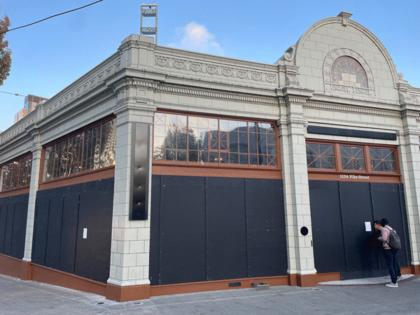


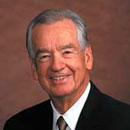


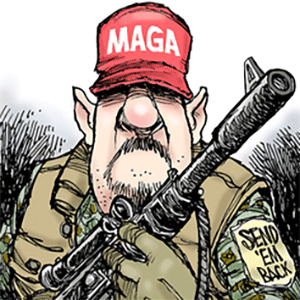

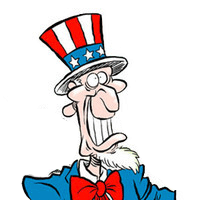
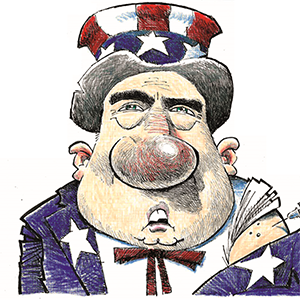
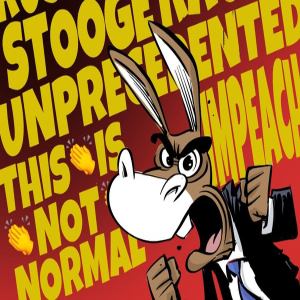

Comments